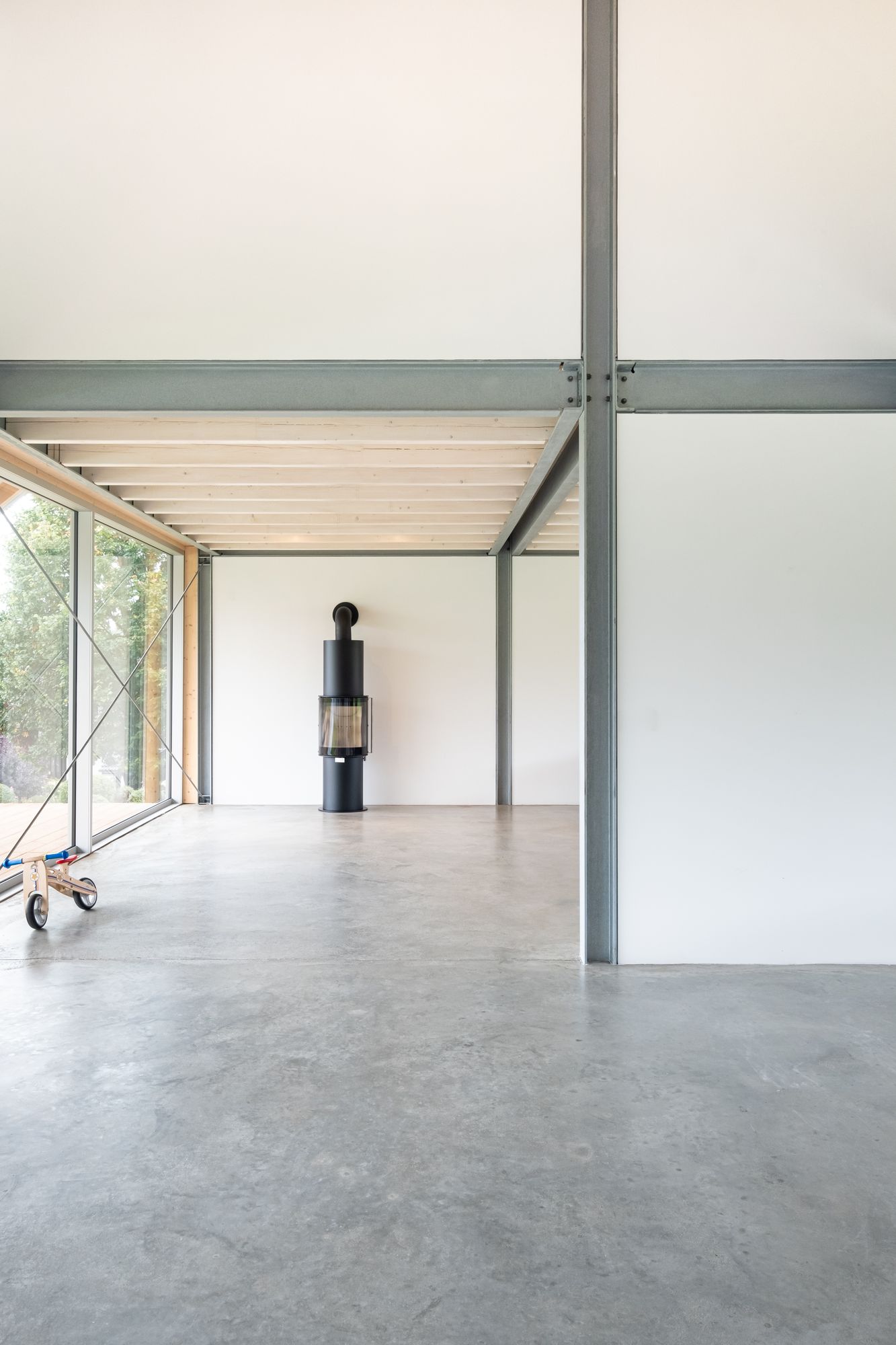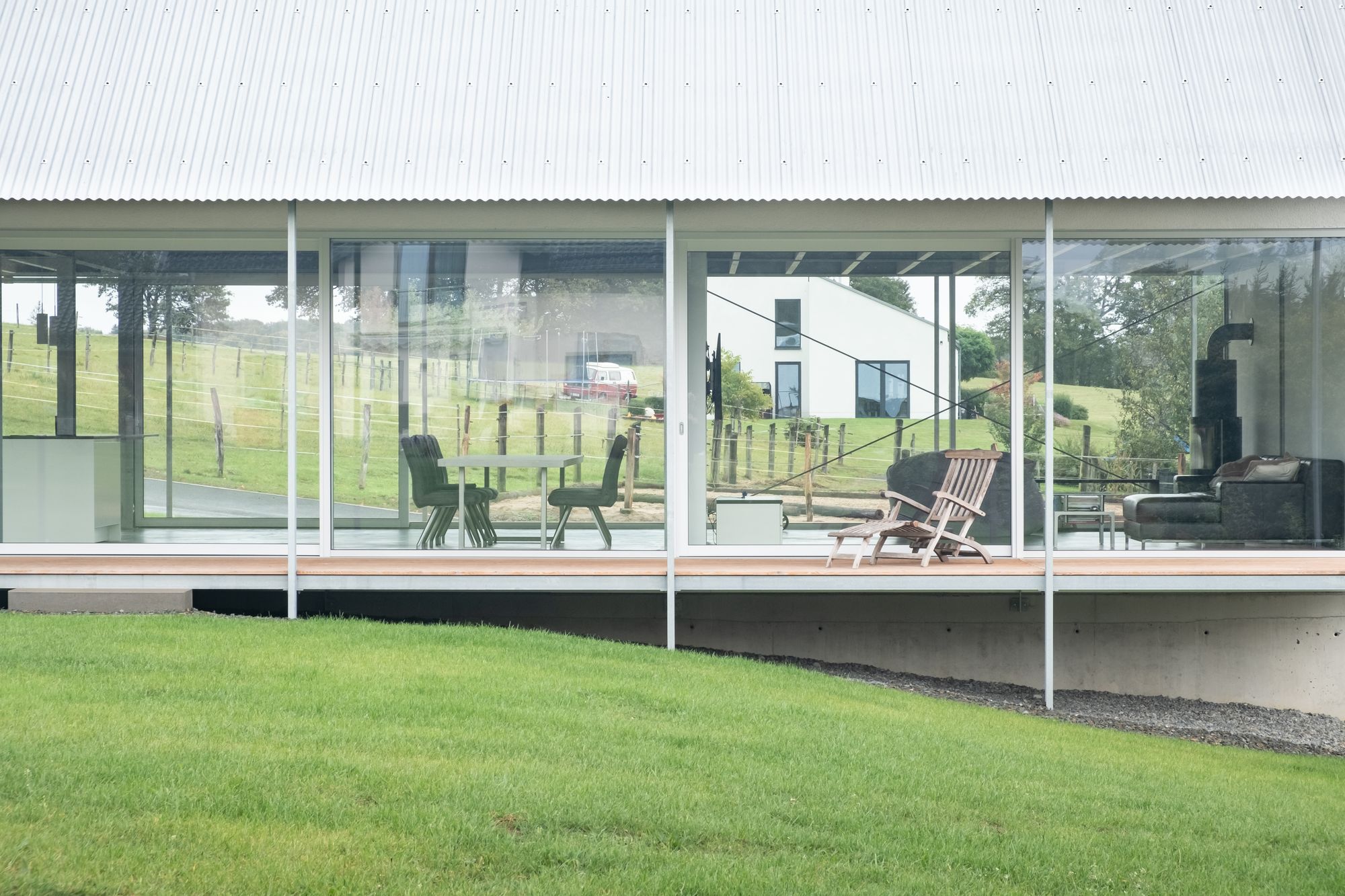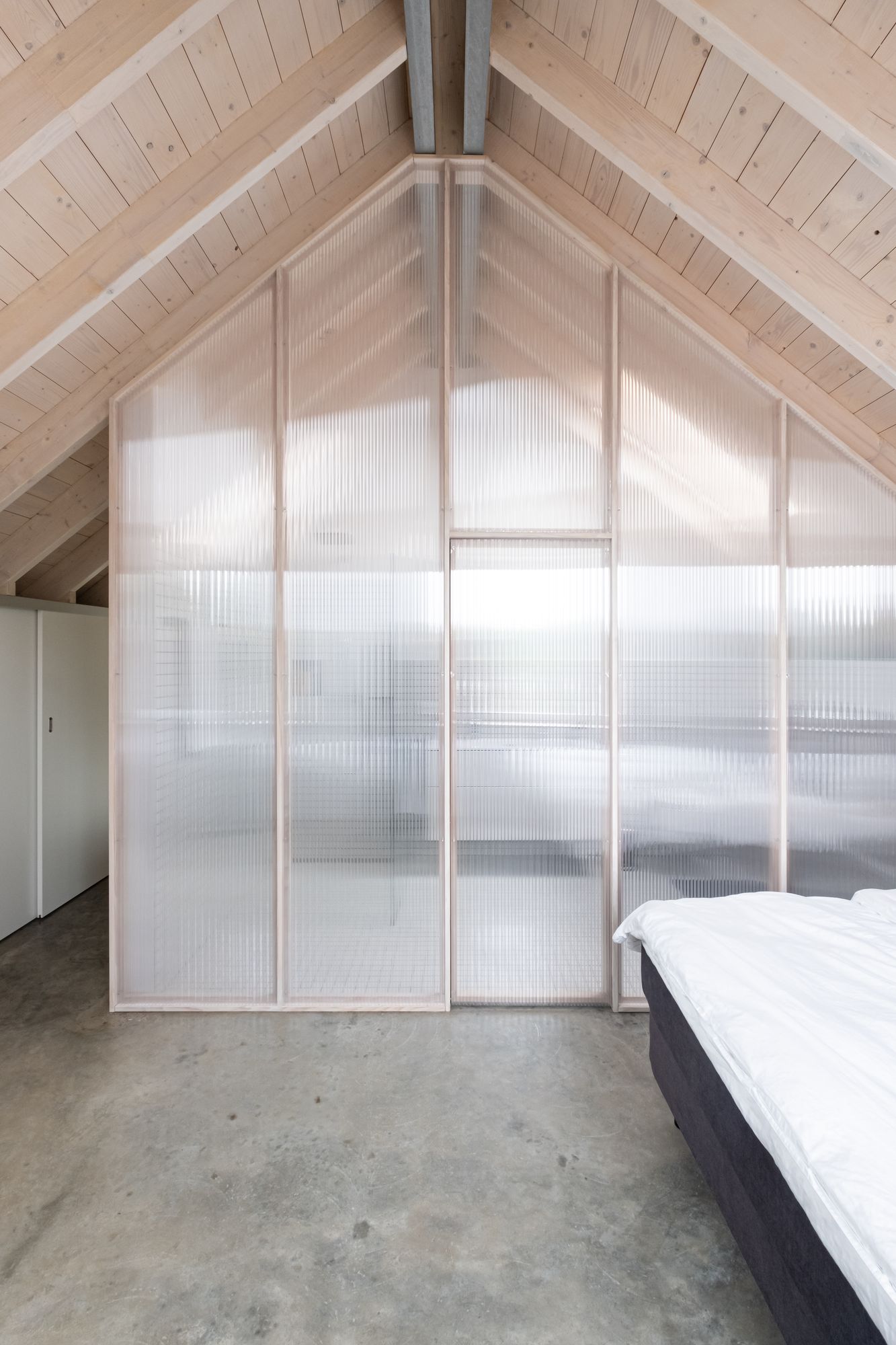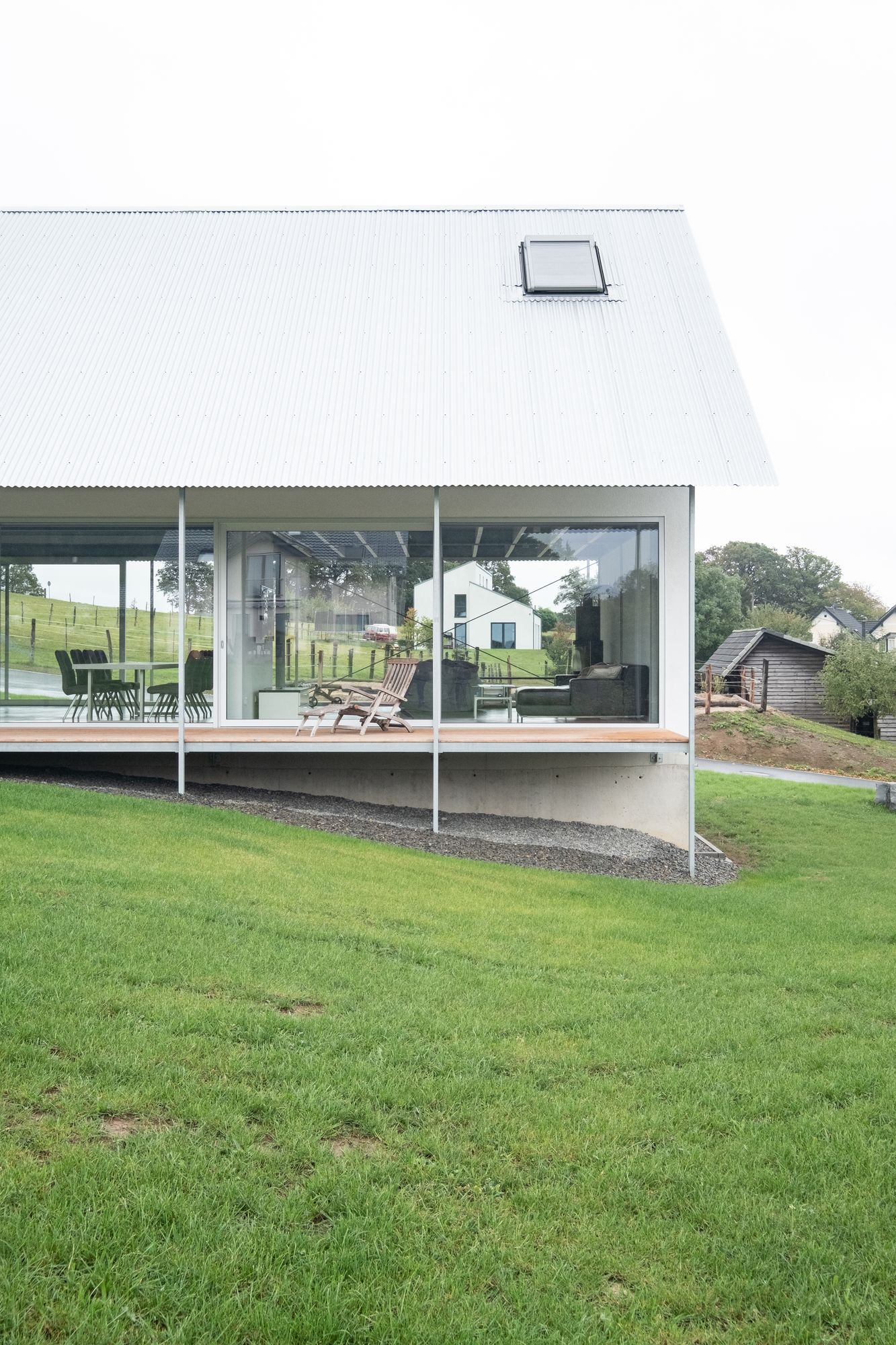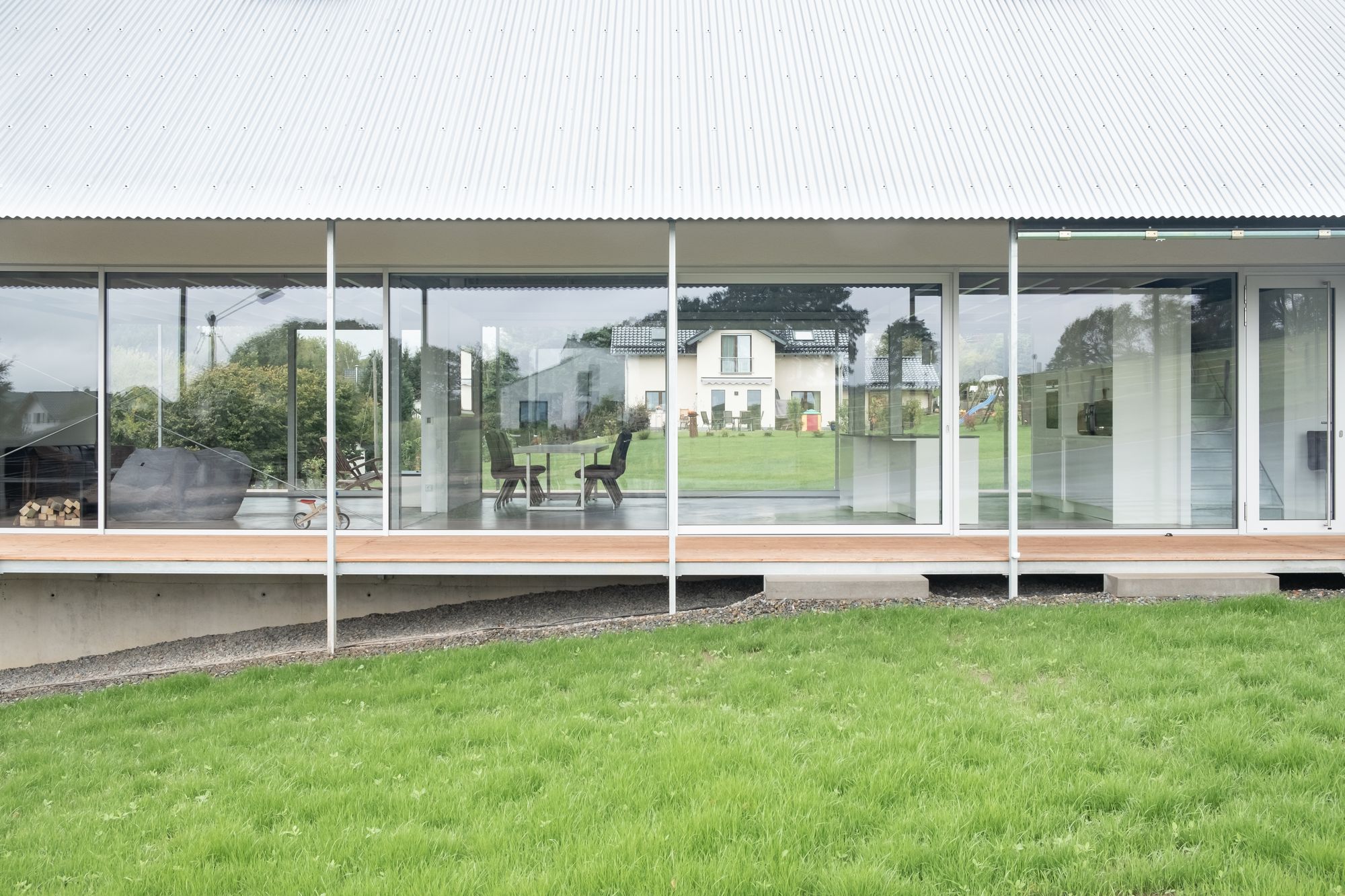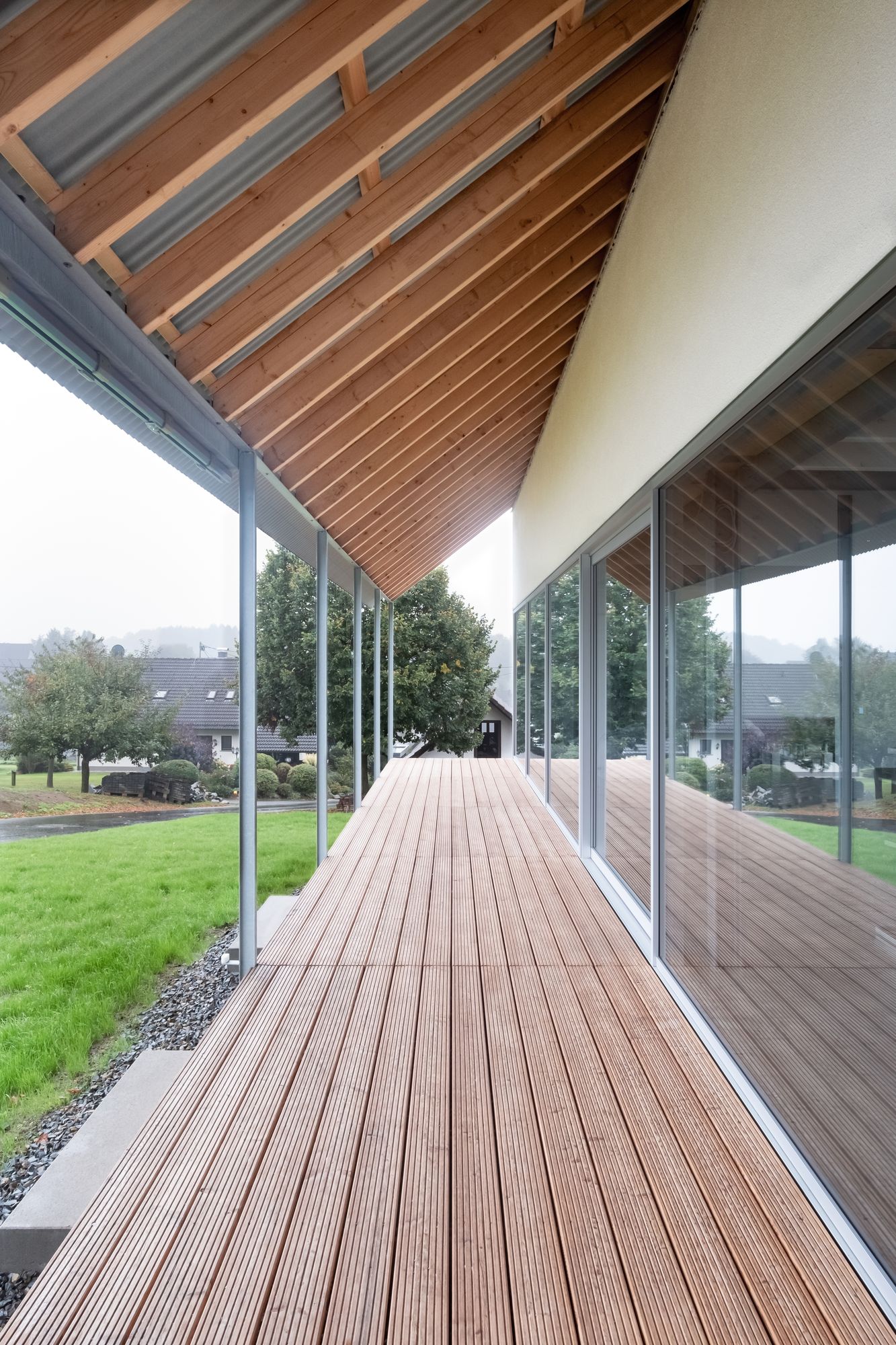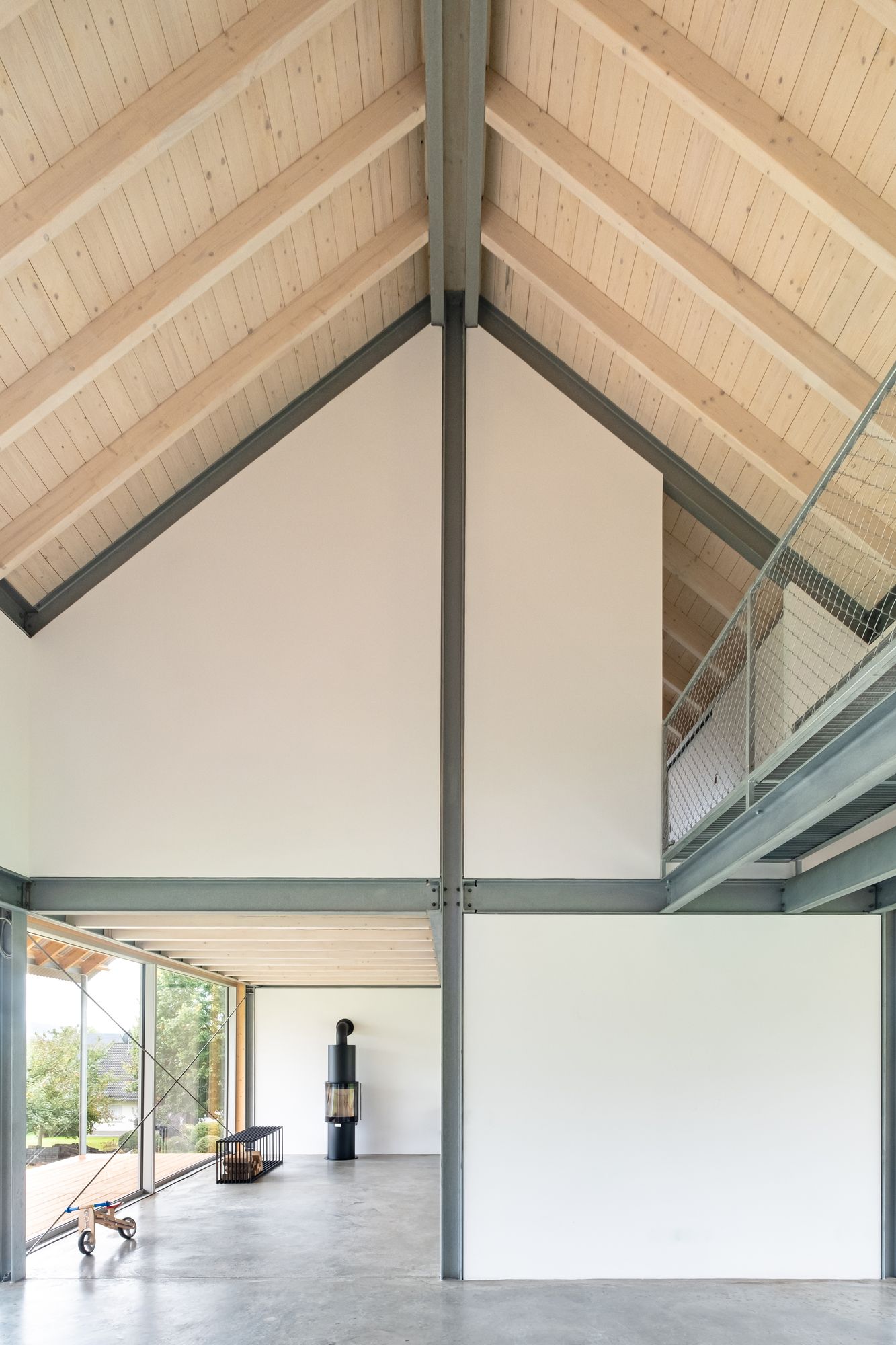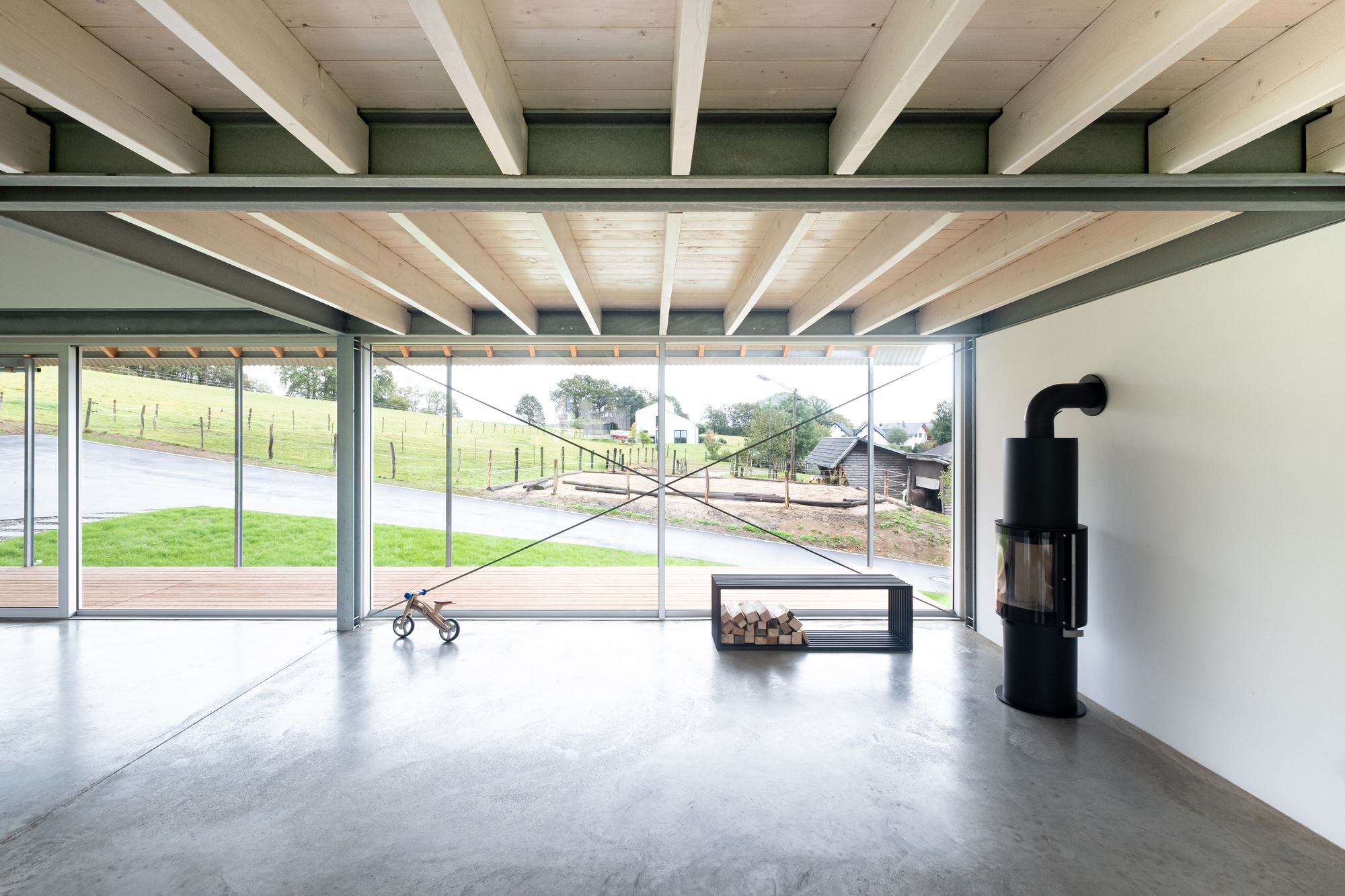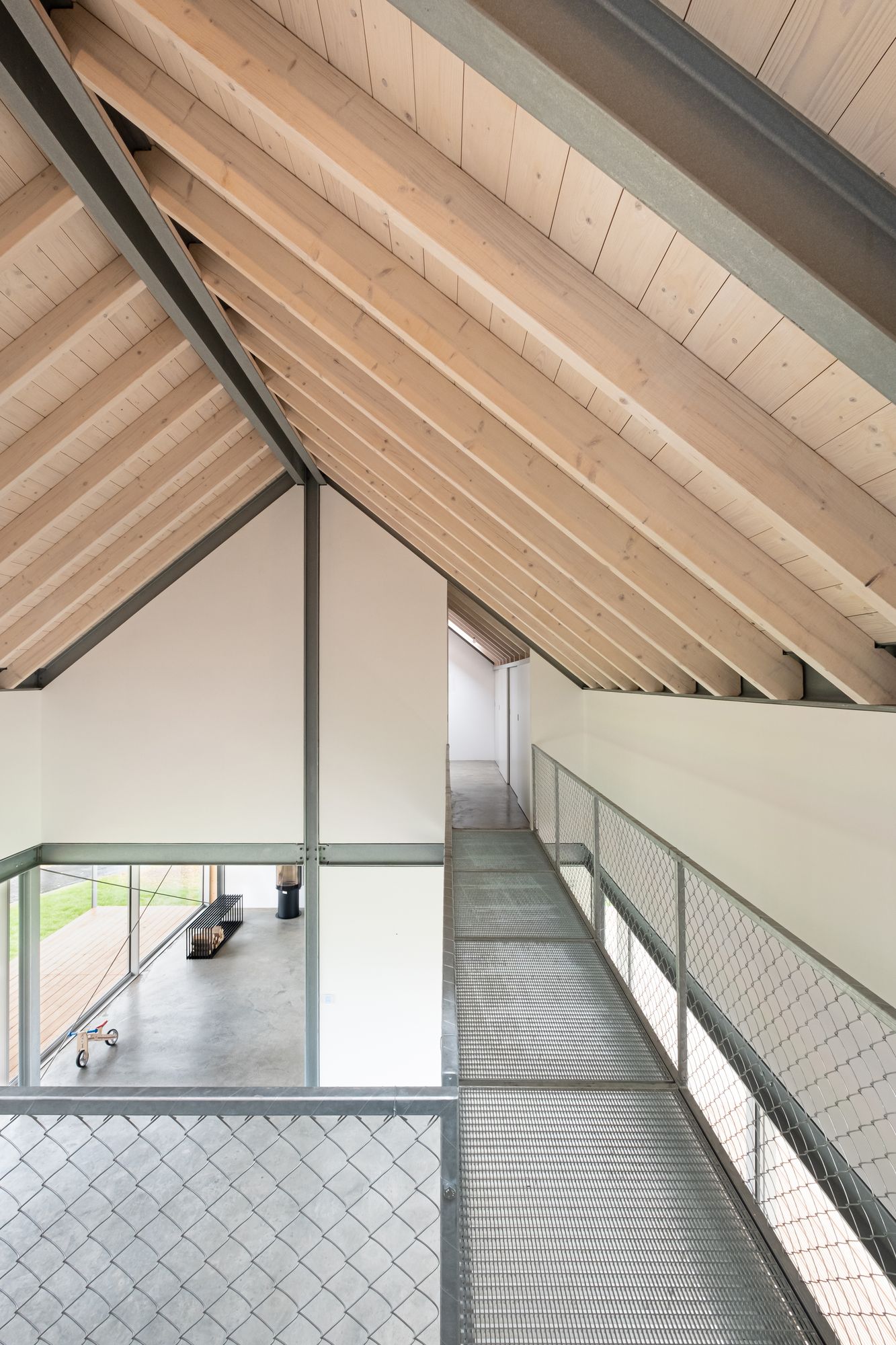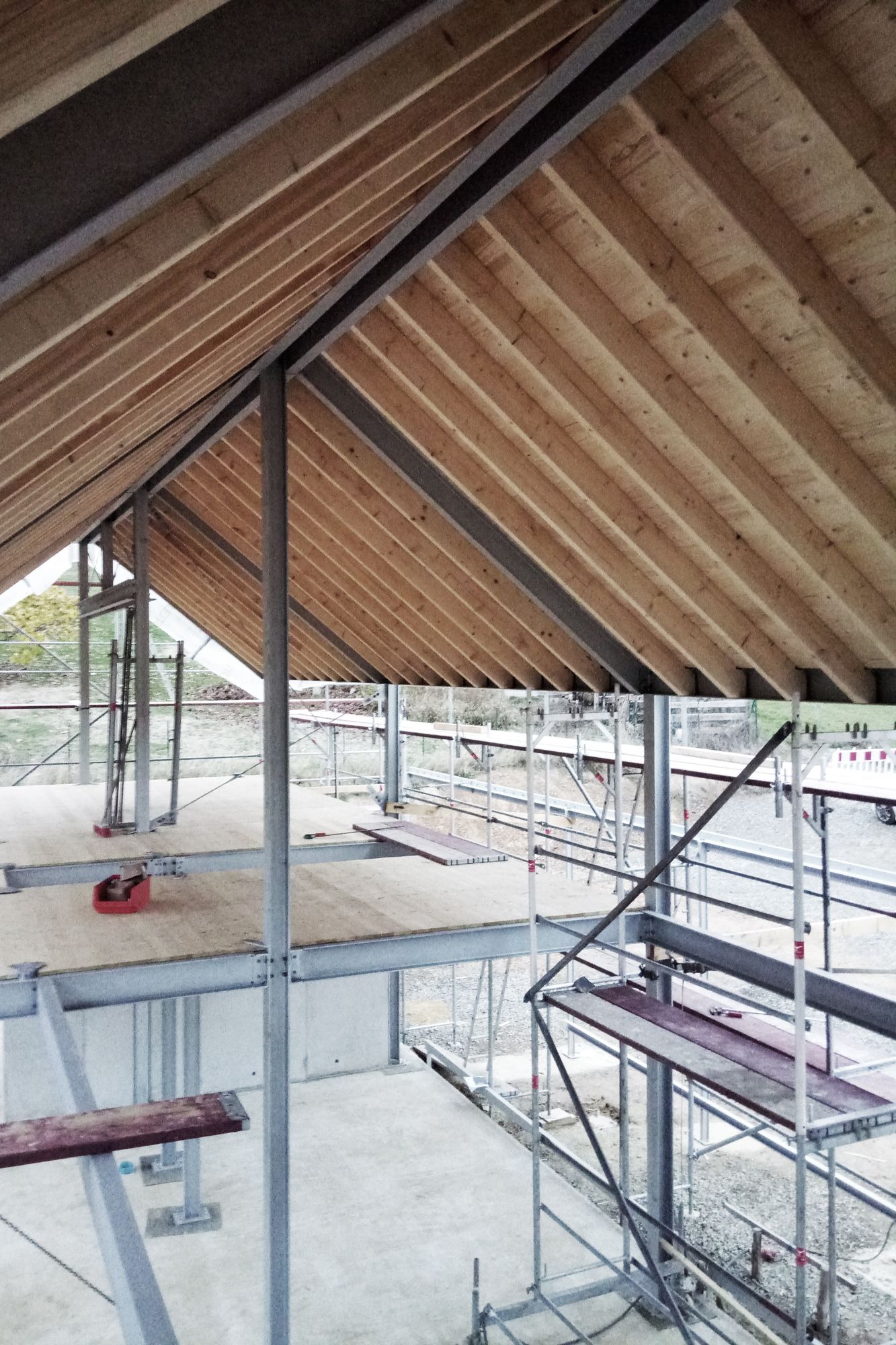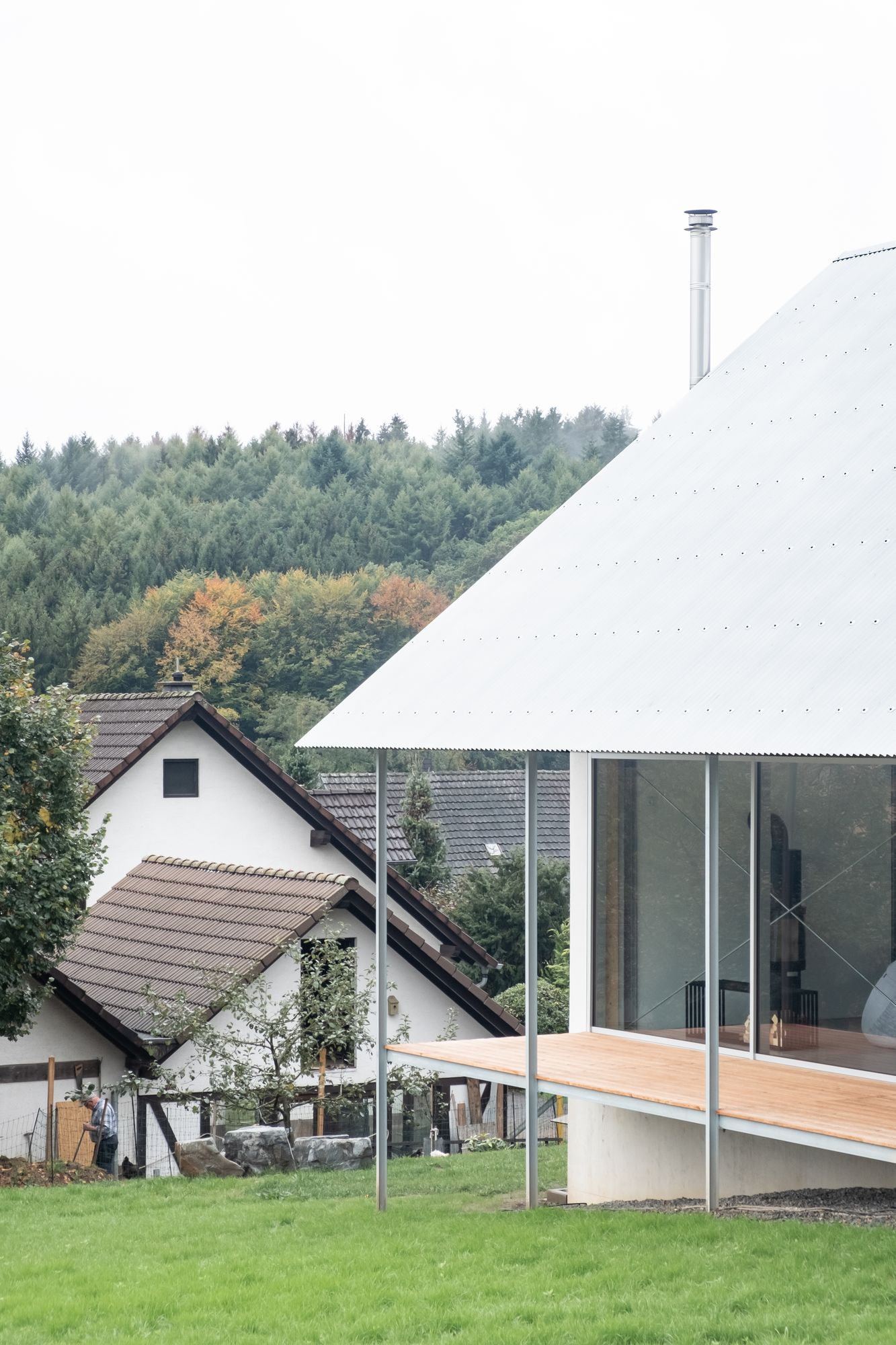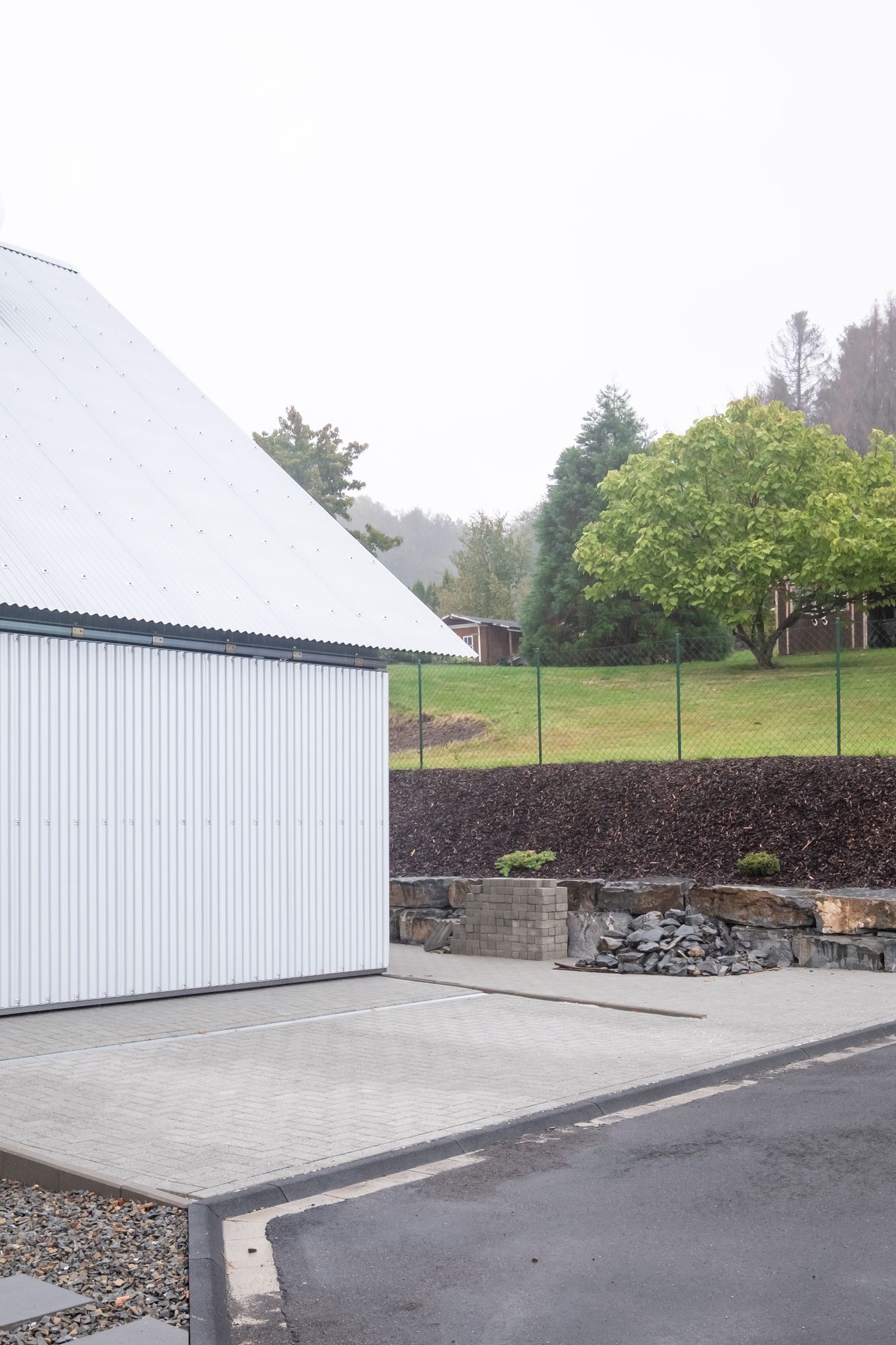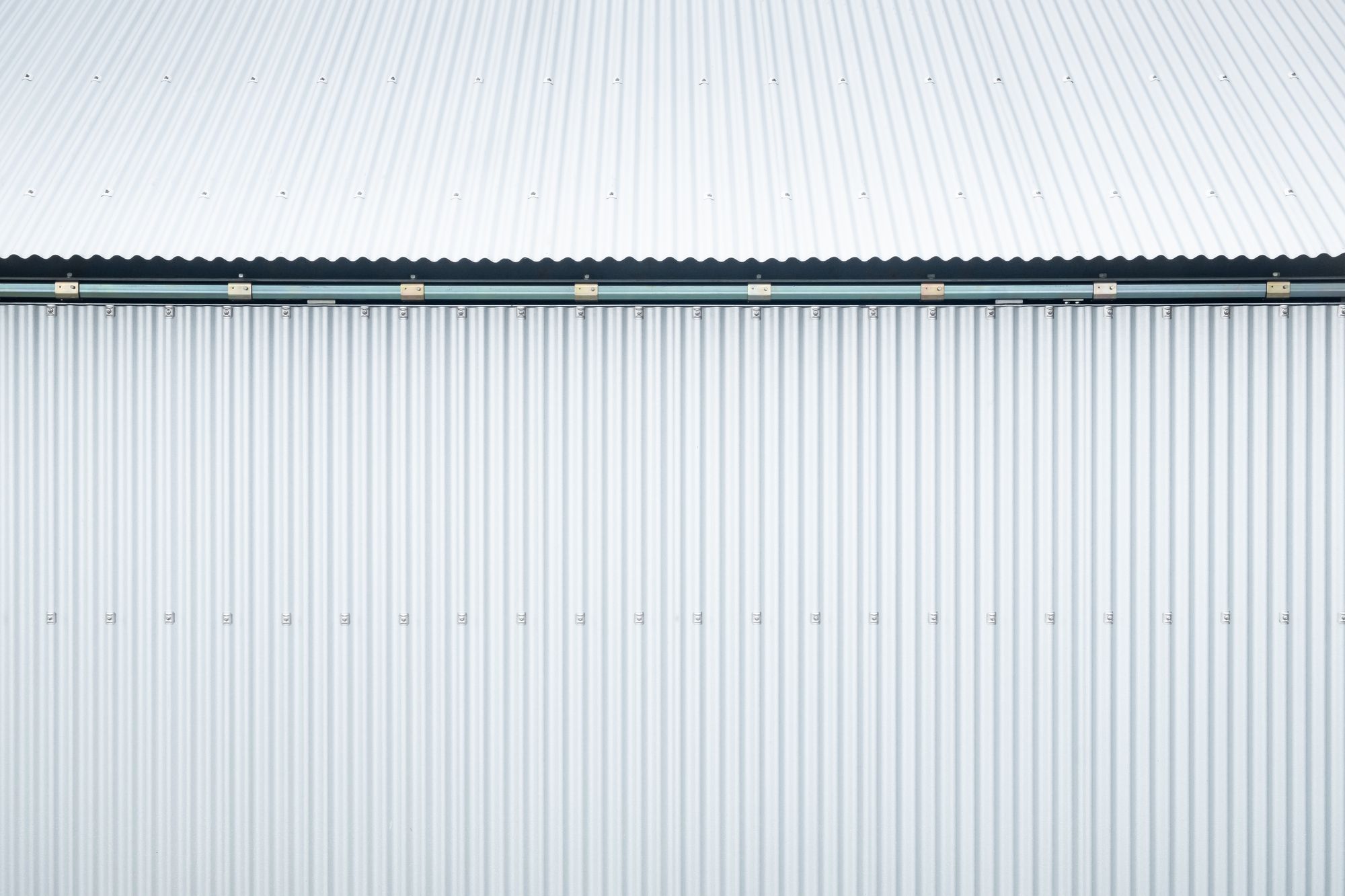House D // 6 is a minimal residence located in North Rhine-Westphalia, Germany, designed by Aretz Dürr Architektur. The design task was to construct a low-cost and sustainable single-family dwelling in the Oberberg region, which incorporates the surrounding landscape area into the living space and creates covered outdoor spaces for the rainy summer days in the region.
In its typology, the new building follows the traditional, one-room deep longhouse. The main rooms take up the entire width and are lined up lengthwise. The ends of the house are dedicated to different functions: Living area in the south, garage and storage rooms in the north. Typical for Oberberg, a solid base, here made of concrete, lifts the living space slightly above the naturally grown slope to protect them from the weather.
The overhang of the pitched roof is designed for both summer and winter sun stands. In summer, it protects the living space and the verandas along the length from overheating. In winter, the double glazed facade enables the solar gains to enter the living space and activate the floating cement screed as a night storage. With its reduced mass, the ventilated roof cladding supports summer thermal insulation and, together with the large roof openings, provides effective night cooling.
The alternation of light and shadow enlivens the roof cladding made of finely structured corrugated iron and creates a soft surface as a visual link between grassland and sky.
The living room in the middle of the building reaches up under the roof and forms the central common room, from which the bedrooms and bathroom of the children and the master bedroom on the upper floor are accessed. A steel walkway with a translucent grating connects the two independent units and leads to the common gallery in the two-storey living area.
The low-material steel and wooden skeleton construction is reversibly joined at all points. The columns are positioned along the eaves at an axial distance of 5.40 metres. The main girders are screwed to the columns and serve to carry the slim-dimensioned wooden beam ceilings. The beams remain visible and create a warm atmosphere for living. The polished screed in the interior is simply impregnated, no additional flooring is required. The construction of the veranda is aligned with the finer metrics of the facade. The sleek columns support the substructure of the larch wood deck and the wooden beams of the roof overhang.
Photography by Luca Claussen
